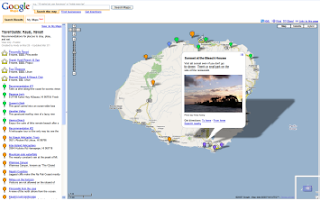
Posted by Doug Ricket, Software Engineer, Google MapsSince the launch of our map-creation tools, we've seen some fantastic content created by people around the world, ranging from places to visit in Kyoto to isolated populations in Western Europe to photos of Americana. We wanted to share these maps with you, so we created a Mapplet for browsing popular user-created maps. This makes it easy to find public maps created by other users via the My Maps...
















